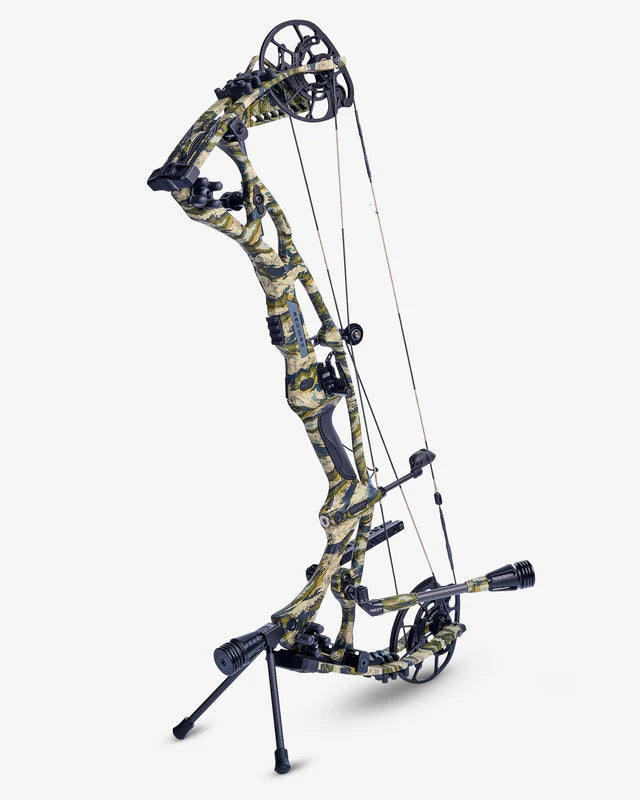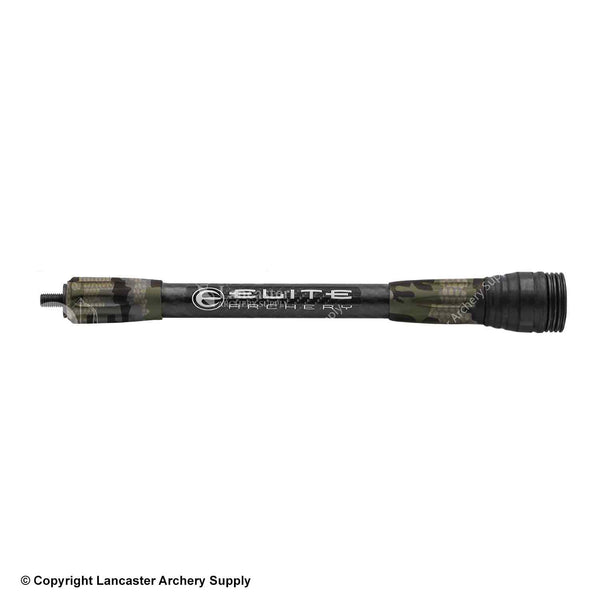Achieve Bullseye Precision: How Bow Stabilizers Can Improve Your Archery Game
In the search of archery quality, precision is vital. One key part that typically goes forgotten in the quest for accuracy is the bow stabilizer. These simple tools play an important role in enhancing your performance on the archery variety, however just how precisely do they achieve this? Recognizing the mechanics behind bow stabilizers and the benefits they provide can make a significant distinction in your capturing experience. Whether you are a skilled archer or simply beginning, revealing the tricks of just how bow stabilizers can boost your video game could simply be the missing out on item you require to strike your targets with unparalleled uniformity.
Relevance of Bow Stabilizers
Why are bow stabilizers important for accomplishing precision and uniformity in archery? Bow stabilizers play a crucial role in enhancing an archer's accuracy by minimizing bow torque and soaking up resonances. When an archer launches an arrow, the bow has a tendency to relocate a little because of various variables such as grip stress, bow weight, and the pressure generated by the release. This movement can cause irregular shots and reduced precision. Bow stabilizers neutralize these pressures by including weight to the bow, which helps in stabilizing it and minimizing the effects of torque - bow stabilizer. Additionally, the stabilizer soaks up resonances that take place upon launching the arrowhead, further stabilizing the bow and improving the archer's capability to preserve a stable goal. By minimizing bow movement and vibrations, stabilizers allow archers to accomplish higher consistency in their shots, inevitably leading to enhanced accuracy and total efficiency on the archery range. Therefore, buying a high-quality bow stabilizer is vital for any archer aiming to improve their capturing skills and attain success in the sport.

How Bow Stabilizers Job
Bow stabilizers work by counteracting bow torque and absorbing vibrations to enhance an archer's accuracy and uniformity in shooting. By extending the size of the bow and adding weight to the stabilizer, the bow's balance changes onward, reducing the impacts of torque during the shot.
Additionally, bow stabilizers assist wet resonances that take place upon launching an arrowhead. These resonances can influence the archer's goal and the arrow's trajectory. Stabilizers with wetting products such as rubber or gel absorb these vibrations, resulting in a smoother shot and improved accuracy. Overall, bow stabilizers work by promoting a controlled and consistent shooting experience, allowing archers to attain higher accuracy and uniformity in their shots.
Benefits of Using Stabilizers
Making use of stabilizers in archery tools provides archers a range of advantages that add to enhanced capturing efficiency and accuracy. By dig this soaking up excess energy and vibrations, stabilizers help in maintaining the bow consistent after the launch, permitting for a more constant and steady goal.

Selecting the Right Stabilizer
When picking the ideal stabilizer for archery devices, it is crucial to consider aspects that line up with the advantages previously detailed, such as stabilizing the bow and reducing vibrations for boosted shooting performance. On the other hand, a lighter stabilizer supplies much more ability to move however might not dampen vibrations as effectively. Carbon fiber stabilizers are light-weight and absorb vibrations well, whereas aluminum stabilizers are long lasting and offer good equilibrium.
Tips for Making The Most Of Stabilizer Efficiency
To enhance stabilizer efficiency in archery, it is important to execute critical modifications based on individual capturing characteristics and devices arrangement. One important tip for making the most of stabilizer performance is to trying out various stabilizer lengths and blog here weights to discover the optimal mix that fits your shooting design. This process might include beginning with a longer stabilizer for much better balance and security, after that gradually changing the weight circulation to accomplish the desired degree of control and accuracy.
Additionally, adjust the placement of the stabilizer on your bow can significantly affect its effectiveness (bow stabilizer). Positioning the stabilizer closer to the riser can boost security, while moving it further away can improve forgiveness and wet vibrations upon release. It is recommended to make tiny adjustments and evaluate the modifications methodically helpful hints to recognize their results on your shot execution
In addition, including dampening accessories such as rubber stabilizer weights or resonance dampeners can further boost the stabilizer's efficiency by reducing noise and hand shock. By very carefully examining and changing these elements, archers can optimize the benefits of their stabilizers and boost their overall efficiency on the array or in competitions.
Conclusion

Bow stabilizers play an important function in enhancing an archer's precision by reducing bow torque and taking in resonances.Bow stabilizers work by combating bow torque and taking in resonances to boost an archer's precision and uniformity in capturing. Carbon fiber stabilizers are light-weight and take in resonances well, whereas aluminum stabilizers are resilient and provide great balance. One important suggestion for optimizing stabilizer efficiency is to experiment with different stabilizer sizes and weights to locate the optimal combination that suits your capturing style.In final thought, bow stabilizers play an essential function in enhancing archery precision by decreasing bow torque and vibration.